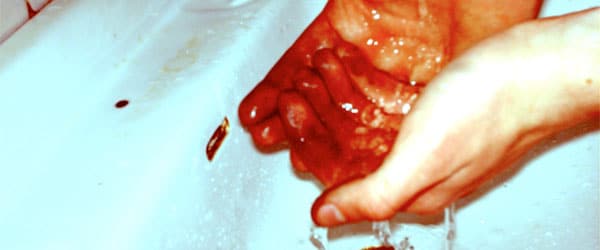Common lab reagents may appear innocuous, but don’t be fooled! Sometimes even the most-used lab chemicals are hazardous to your health. It is important to make sure you have an understanding of the dangers a reagent can present before you use it.
Which common chemicals should you look out for?
Here is a brief look at five commonly misunderstood chemicals and the hazards they can present to you and your lab.
70% Ethanol
Ethanol can’t be that bad right? Many hand sanitizers contain about 50-70% alcohol and popular opinion believes that everyday use is safe. In the lab, profuse amounts of ethanol are sprayed to disinfect equipment and working surfaces for cell culture. And therein lies the danger: ethanol and the evaporative fumes are flammable. Many people forget this common sense knowledge. When spraying ethanol keep away from static electric spark, heat and flame.
Formalin
Paraformaldehyde depolymerizes into formaldehyde (formalin) when dissolved in warm solution. It’s an elixir of choice for preparing robust samples for immunohistochemistry. People are rightly wary of the potential carcinogenic hazards of formaldehyde-like chemicals; however there is a greater danger that is often overlooked.
Formalin can make a person go blind by causing irreparable damage to vision. It is prudent to wear protective eye wear that can defend against accidental splashes when working with any reagent.
β-mercaptoethanol (β-ME)
β-ME is a reducing chemical that stops ribonucleases from chomping apart RNA. It even reduces everyone in the lab to tears when used improperly (outside the fume hood) because of its overpowering, pungent, rotten-egg scent. Molecularly, β-ME rips apart disulfide bonds (R-S-S-R) to form sulfhydryl or thiol groups (R-SH), which changes the way many enzymes act.
β-ME is toxic, volatile, and is one chemical that will gather a lab 15 minutes of fame for all the wrong reasons. Is that a really big natural gas leak or did someone accidentally dispose of β-ME down the drain?
Ethidium Bromide
EtBr is a favorite ingredient for gel electrophoresis. It intercalates into nucleic acids to make them fluoresce under ultraviolet light.
The hazards list for EtBr reads like a prescription for a zombie apocalypse in the making. Substance causes frameshift mutations, is teratogenic and toxic.
In all actuality, EtBr is toxic, but not as toxic as most believe. A lot of hazards determination for chemicals is done in vitro, but not always in vivo. And when it’s performed, conditions usually don’t reflect incidental use where a pinch is used in an experiment and a pound is used in the living system.
When a reagent has such an infamous reputation, take a second look and decide for yourself if literature validates popular opinion. Begin here at BitesizeBio and here at the National Toxicology Program to get started with a more in-depth review.
Water
Dare I say water presents more of a hazard than ethidium bromide? Every lab takes water to extremes: extreme cold in the lo temp freezers (ice) and extreme heat in the autoclave (steam). For use in reagents and everywhere else, keep an eye out for floods, spills, wet floors and be cautious of slips and falls. They happen more often than you might think.
What other common lab reagents in your lab have a reputation for being misunderstood?






